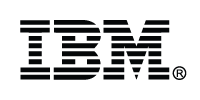Download this article in PDF format.
As the supply chain landscape continues to evolve, organizations have found themselves navigating a complex environment. Technological advancements, geopolitical shifts and evolving consumer expectations are just some of the top issues that they’re dealing with, not to mention the threat and/or introduction of new tariffs on exported and imported goods.
To help supply chain managers, procurement specialists, logistics managers and other stakeholders navigate these complexities, the Association for Supply Chain Management (ASCM) recently released its Top 10 Supply Chain Trends 2025. In it, the ASCM highlights some of the major shifts taking place in the sector and also offers up suggestions for how to best manage these disruptions and opportunities.
AI, Global Trade and Geopolitical Issues
First up on ASCM’s list is artificial intelligence (AI), which it says is transforming supply chain operations at a “remarkable speed.” From machine learning to neural networks to robotics, AI enables more intelligent sourcing for optimized supplier selection and negotiation processes; improved inventory management, demand forecasting, inventory optimization and replenishment strategies; and smarter logistical planning for greater transportation efficiency and reduced costs.
Maximizing AI’s potential requires a mindset of continuous learning and experimentation, according to ASCM. “Stay informed about the latest trends and technologies to identify opportunities to disrupt traditional practices and generate value,” it advises. “Encouraging collaboration among teams and departments can also spark creative thinking and lead to exciting new AI-driven solutions.”
Next on ASCM’s list are global trade dynamics and geopolitical policies, both of which pose supply chain challenges like disrupted supply routes, higher costs and economic fluctuations. In recent years, for example, shipping lines have faced increased costs and delays due to geopolitical tensions, trade disputes, climate change and severe weather—all of which threaten cargo ships and global trade.
“To mitigate these risks, smart supply chain professionals are focusing on diversification, contingency planning and data-driven decision-making,” ASCM says. “Further, they are tapping into valuable tools and techniques to enhance resilience and prepare for the next inevitable disruption.”
Don’t Miss these Key Trends
Here are some of the other important supply chain trends that ASCM is tracking as we move further into 2025:
- Big data and advanced analytics. Big data and advanced analytics are enabling supply chain organizations to more easily identify inefficiencies, reduce costs, improve customer service, and enhance resilience and agility. Applications include standardized freight data exchange to deliver operational efficiencies, fine-tune routes and port planning, and reduce emissions and costs.
- Cybersecurity. Cybercriminals are targeting all entry and access points, which is bringing about an alarming increase in data breaches, delays and shortages; reputational damage; compliance issues; safety risks; and financial loss. Cybersecurity is a core element of digital and intelligent networks, and supply chain professionals must safeguard these systems by staying up-to-date on best practices; taking a risk-based approach; and investing in cybersecurity solutions, training and awareness.
- Agility and resilience. Supply chain agility requires machines capable of faster changeovers and a wider range of products and shipment types, collaborative robots, smart packaging, artificial intelligence and big data to proactively manage flows. ASCM points to the electronics industry as a prime example of forward-thinking agility and resilience in action. “Rapid technological advancements, coupled with unpredictable demand patterns, necessitate flexible and responsive supply chains,” it says. “By leveraging AI, machine learning and the Internet of things (IoT), businesses improve production processes, forecasting accuracy and supply chain visibility.”
- Visibility and traceability. Enhanced visibility and traceability are essential for tracking goods and materials from product origin to final destination. Supply chain organizations are leveraging advanced technologies to enhance visibility and traceability across their operations. “By implementing real-time tracking systems, tapping into IoT-enabled devices and leveraging blockchain technology,” ASCM says, “companies can better monitor the movement of goods, identify potential disruptions and improve supply chain efficiency.”
- Strategic sourcing and supplier management. Supply chain leaders have long understood the importance of strategic sourcing and supplier management. In recent years, however, ASCM says there have been several noteworthy innovations in this area. For example, advanced analytics and AI-powered tools are helping identify and assess potential risks, such as geopolitical events and natural disasters. “To excel in strategic sourcing and supplier management, prioritize strong relationships with key suppliers,” ASCM recommends. “Also, by cultivating a culture of continuous improvement and staying informed about industry trends and emerging technologies, team members can drive exciting innovation, improve quality and boost efficiency.”
About the Author
Avery Larkin
Contributing Editor
Avery Larkin is a freelance writer that covers trends in logistics, transportation and supply chain strategy. With a keen eye on emerging technologies and operational efficiencies, Larkin delivers practical insights for supply chain professionals navigating today’s evolving landscape.






